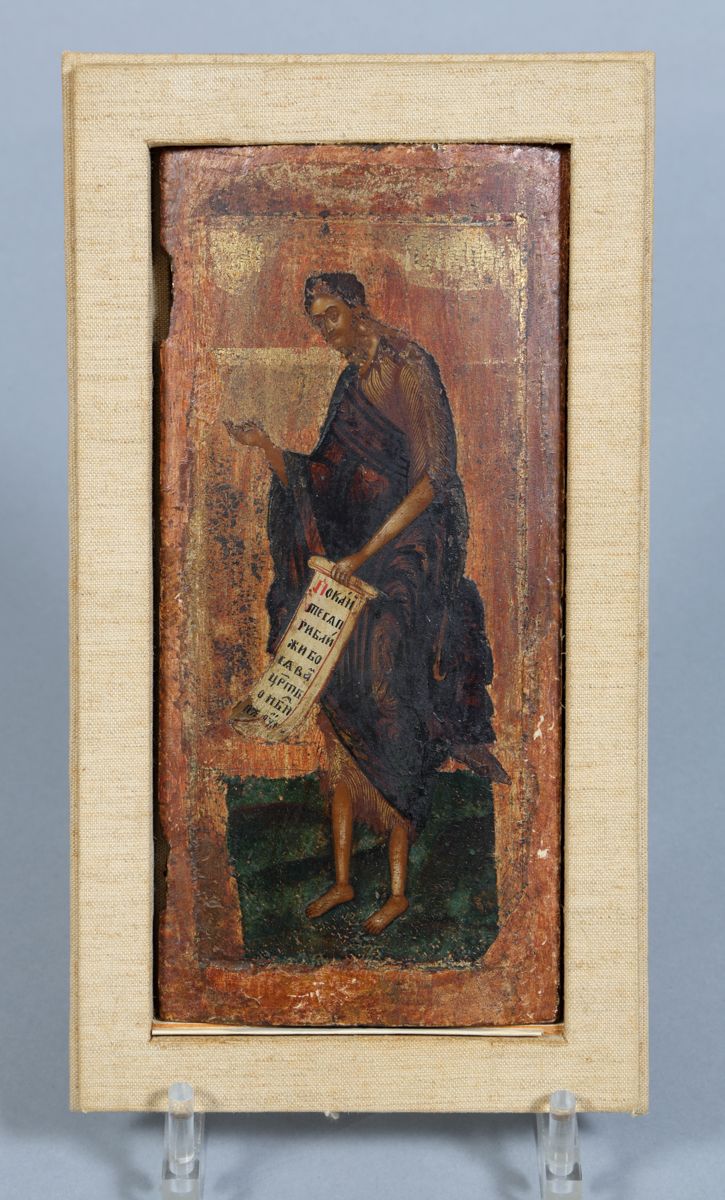Description
Icon: John the Baptist as part of a Deësis, probably Greek/Bulgarian, ,egg tempera on wood, partially gilded, depiction of the saint turned to his left, holding a scroll with a church Slavonic inscription in his left hand, 28.5 x 13.5 cm, in a case. Limit 198,-
315
Icon: John the Baptist as part of a Deësis, probably Greek/Bulgarian, ,egg tempera on wood, partially gilded, depiction of the saint turned to his left, holding a scroll with a church Slavonic inscription in his left hand, 28.5 x 13.5 cm, in a case. Limit 198,-
You may also like
